Nelson 800 Series Flow Handleiding
Nelson
Besproeiingsbesturing
800 Series Flow
Bekijk gratis de handleiding van Nelson 800 Series Flow (3 pagina’s), behorend tot de categorie Besproeiingsbesturing. Deze gids werd als nuttig beoordeeld door 56 mensen en kreeg gemiddeld 5.0 sterren uit 28.5 reviews. Heb je een vraag over Nelson 800 Series Flow of wil je andere gebruikers van dit product iets vragen? Stel een vraag
Pagina 1/3

Nelson Irrigation Corporation 848 Airport Rd. Walla Walla, WA 99362-2271 USA Tel: 509.525.7660 Fax: 509.525.7907 info@nelsonirrigation.com www.nelsonirrigation.com
12/8/20
RATE OF FLOW INSTALLATION
PLUMBING REQUIREMENTS
REMOTE MOUNT INSTALLATION
• A straight length of pipe five pipe diameters long helps take out turbulence and will improve
valve performance. See Figure 1. Excessive turbulence caused by fittings, pipe size changes,
flow meters, and/or pumps immediately upstream of the valve can have a negative impact
on valve performance or even damage the flow-sensing paddle.
• Do not mount the pilot downstream of the valve.
• For applications where the pilot will not fit upstream of the valve, an after-market, in-valve
model is available (6” and 8” valves only). Contact factory for details.
• The rate-of-flow pilot is intended to be installed in steel pipe. If attempting to install in PVC
pipe, be cautious of saddles or fittings that will prevent the paddle from moving freely or be-
ing entirely inserted into the flow path. This may cause the valve to regulate at a flow rate
that is dierent than the indicated value on the pilot calibration stem.
• The rate-of-flow pilot is not intended to replace a flowmeter; having a flowmeter nearby will
assist in setting the pilot.
• Install continuous acting air vents upstream of the rate-of-flow valve to prevent air entrap-
ment and water hammer.
5D
1/3
2/3
VALVE
FLOW
Figure 1. Five pipe diameters upstream are required for best perfomance.

Nelson Irrigation Corporation 848 Airport Rd. Walla Walla, WA 99362-2271 USA Tel: 509.525.7660 Fax: 509.525.7907 info@nelsonirrigation.com www.nelsonirrigation.com
12/8/20
RATE OF FLOW INSTALLATION
INSTALLATION STEPS
1. After selecting an installation location that meets the plumbing requirements, cut a hole
in the top of the steel pipe so that a 1” half coupler can be welded to it. The hole should be
1.25”-1.5” in diameter, with no burrs or obstructions.
2. Remote mounted rate-of-flow pilots include one or two 1” FNPT threaded half couplers, de-
pending on the model. High-flow models (D18-4 and D18-6) include just one coupler and can
skip this step. The two couplers included with low-flow models are to accomodate dierent
thickness of pipe. The short coupler (0.68” / 1.7 cm) is used with thick-walled pipe, and the tall
coupler (0.96” / 2.4 cm) is used with thin-walled pipe. To determine which coupler to use with
low-flow models:
a. Measure from of pipe to of pipe (dimension A, see Figure bottom of inside top of outside
2).
b. With shorter half coupler installed on the paddle assembly, measure distance from end
of paddle to bottom end of half coupler (dimension B, see Figure 3).
c. If the paddle length “B” is shorter than the pipe depth “A”, then use this shorter coupler.
Otherwise, use the taller coupler (you may wish to repeat step 2b with the taller coupler
to double check). If the paddle is too long it will not function correctly. Double check
your measurements and that you have the right model of rate-of-flow pilot.
1.25-1.5” Hole
A
Flow Valve
B
1” Half Coupler
Paddle Assembly
Pilot Body
Connection
Point “C”
Flow
Figure 2. Pipe depth measurement. Figure 3. Paddle length measurement.
3. Weld the coupler onto the pipe. Be sure to remove the coupler from the paddle assembly
before doing so. Discard the unused coupler. Wait for the weld to cool before proceeding.
4. Unthread the pilot body from the paddle assembly at point “C” as indicated in Figure 3. Take
care not to lose the rubber washer between the pilot body and paddle assembly.
5. Thread the paddle assembly into the coupler on the pipe. Be sure that the hole where the
pilot body attaches is pointed directly upstream. It is critical that the pilot body be parallel
with the pipline.
6. Reattach the pilot body to the paddle assembly.
7. Connect the control tubes to their respective ports on the valve. If you purchased the rate-
of-flow pilot as part of the valve configuration, these ports/tubes will be labeled “1” and “2”.
If you purchased the rate-of-flow pilot as a retrofit kit to install on an existing valve, refer to
the corresponding plumbing diagram for your application.

Nelson Irrigation Corporation 848 Airport Rd. Walla Walla, WA 99362-2271 USA Tel: 509.525.7660 Fax: 509.525.7907 info@nelsonirrigation.com www.nelsonirrigation.com
12/8/20
RATE OF FLOW INSTALLATION
SETTING AND INITIAL START-UP
FINE TUNING AND TROUBLESHOOTING
With the control tubing correctly connected, the valve will be controlled by the rate-of-flow pilot
when the valve’s manual selector is in the AUTO position. The following guidelines will help en-
sure a smooth initial startup.
• The setting on the control pilot calibration label is read with the locknut backed o.
• For applications where the rate-of-flow valve is used to control pipe fill rate, the pilot
should be set to 110-120% of the system design flow. This allows the system to fill in
a timely manner without inducing water hammer or taking excessive flow from other
zones on the system.
• For applications where the rate-of-flow valve is used to limit flow to a reservoir, the pilot
should be set to the desired fill rate.
• If starting a new system that is completely full of air, do not start with the valve’s manual
selector in the AUTO position as the initial rush of water could damage the paddle and may
exceed the pilot setting until the valve can slowly begin to throttle.
• It is best to first set the manual selector to CLOSE to allow the valve control chamber to
fill with water. Install a continuous acting air vent upstream of the valve to help remove
air from the system upon startup. Once the upstream pipe and control chamber are full
of water, the manual selector may be turned to “AUTO” to allow the valve to open.
• Note that the rate-of-flow works as a flow limiting device, and it will not prevent flows less
than the setting on the pilot from occurring. When the flow drops below the setting on the
pilot, the rate-of-flow pilot stops controlling the valve, allowing it to either go fully open or to
respond to a pressure control pilot (if equipped).
• The calibration label on the pilot is there to assist in achieving the approximate target flow.
• A nearby inline flowmeter can be used to more precisely set the pilot.
• Whenever adjusting the calibrated stem on the pilot, allow ample time for the valve to re-
spond and the system to stabilize before making other adjustments. Be patient.
• If the system never reaches full operating pressure the pilot may be set too high.
• Setting the rate-of-flow pilot too high can cause water hammer, and is the same as allowing
the system to fill unchecked.
• Be sure the upstream pressure is within the limits of the valve sleeve rating.
• See the “Operation and Maintenance” brochure of the respective valve function for addition-
al troubleshooting.
Product specificaties
| Merk: | Nelson |
| Categorie: | Besproeiingsbesturing |
| Model: | 800 Series Flow |
Heb je hulp nodig?
Als je hulp nodig hebt met Nelson 800 Series Flow stel dan hieronder een vraag en andere gebruikers zullen je antwoorden
Handleiding Besproeiingsbesturing Nelson

9 Juli 2023

2 Juli 2023

25 Juni 2023

25 Juni 2023

22 Juni 2023

21 Juni 2023

21 Juni 2023

21 Juni 2023

20 Juni 2023
Handleiding Besproeiingsbesturing
- Aqua Joe
- Woox
- Blumfeldt
- Brendz
- Westfalia
- Rain Bird
- Florabest
- EMOS
- EVE
- MESTO
- Gardena
- Metabo
- Cotech
- Hozelock
- Milwaukee
Nieuwste handleidingen voor Besproeiingsbesturing
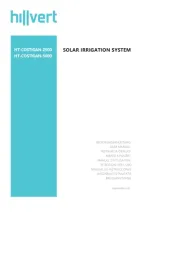
8 September 2025
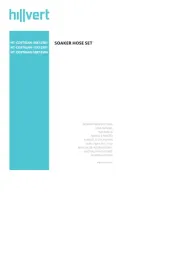
1 September 2025
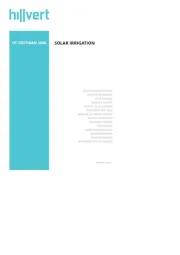
1 September 2025
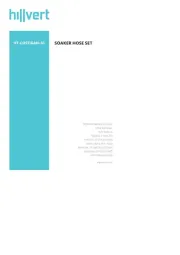
1 September 2025
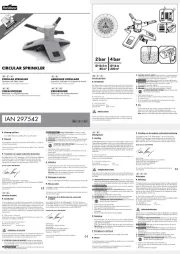
7 Juli 2025
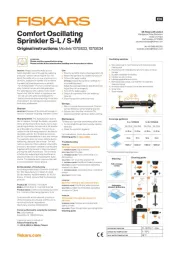
5 Juli 2025
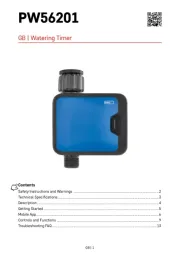
30 Juni 2025
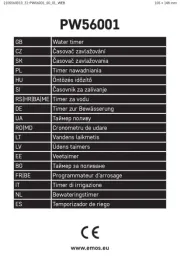
15 Juni 2025
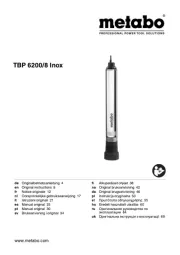
17 Maart 2025

1 December 2024
